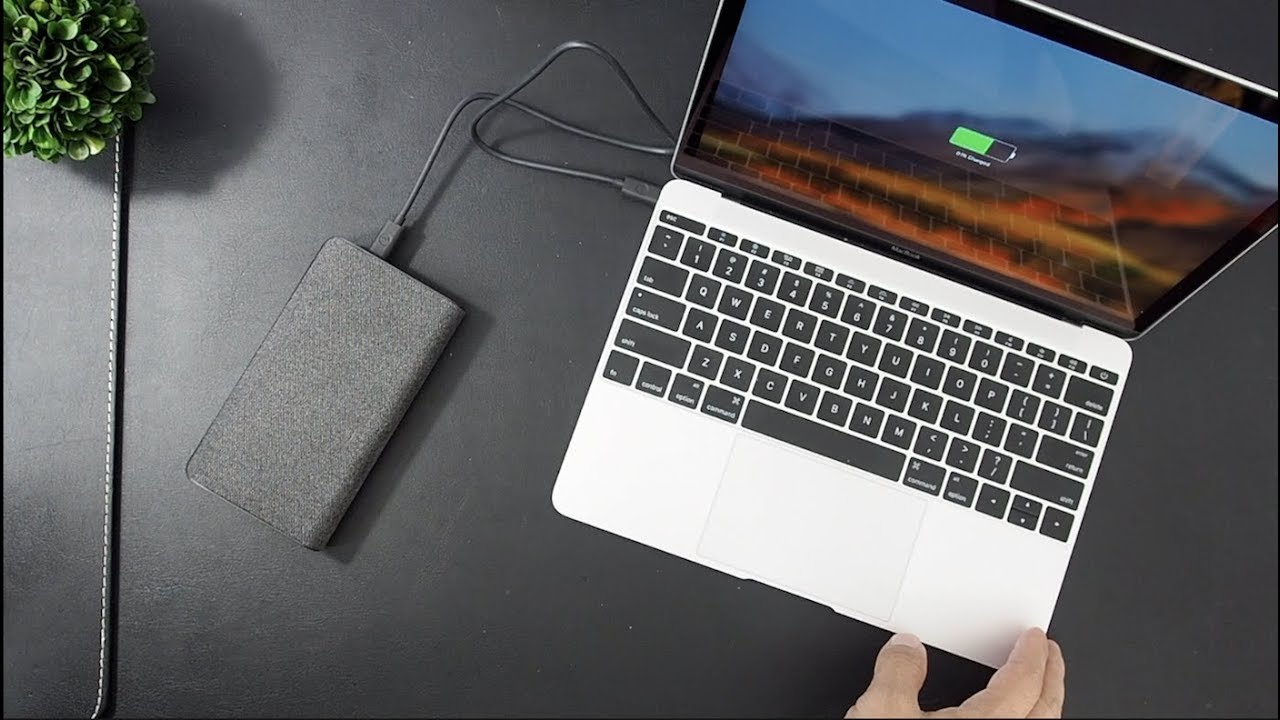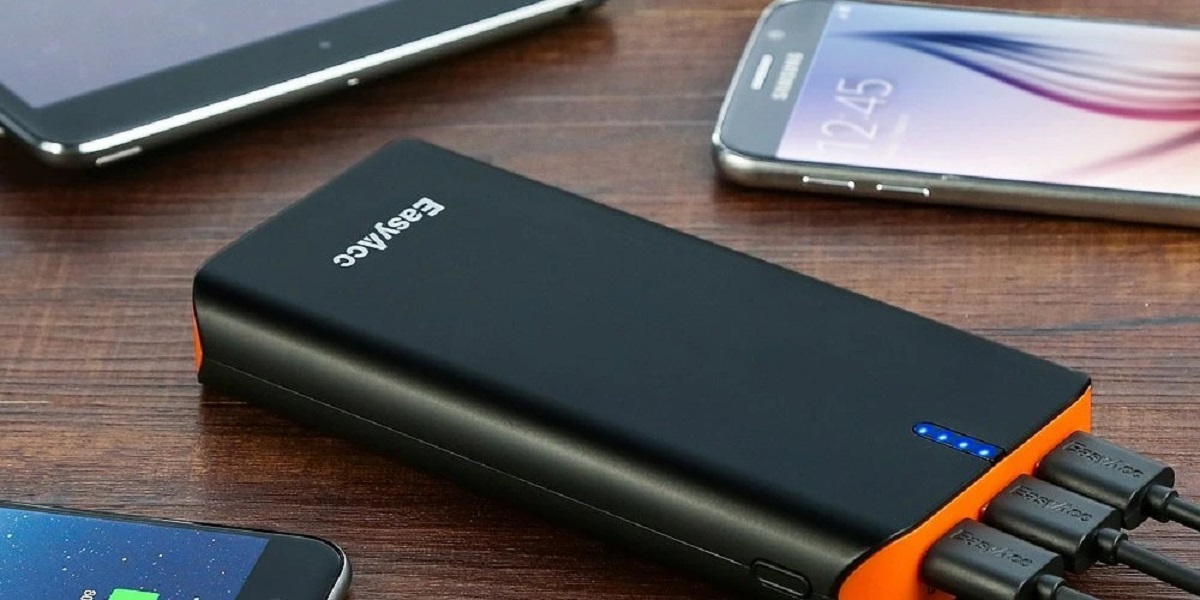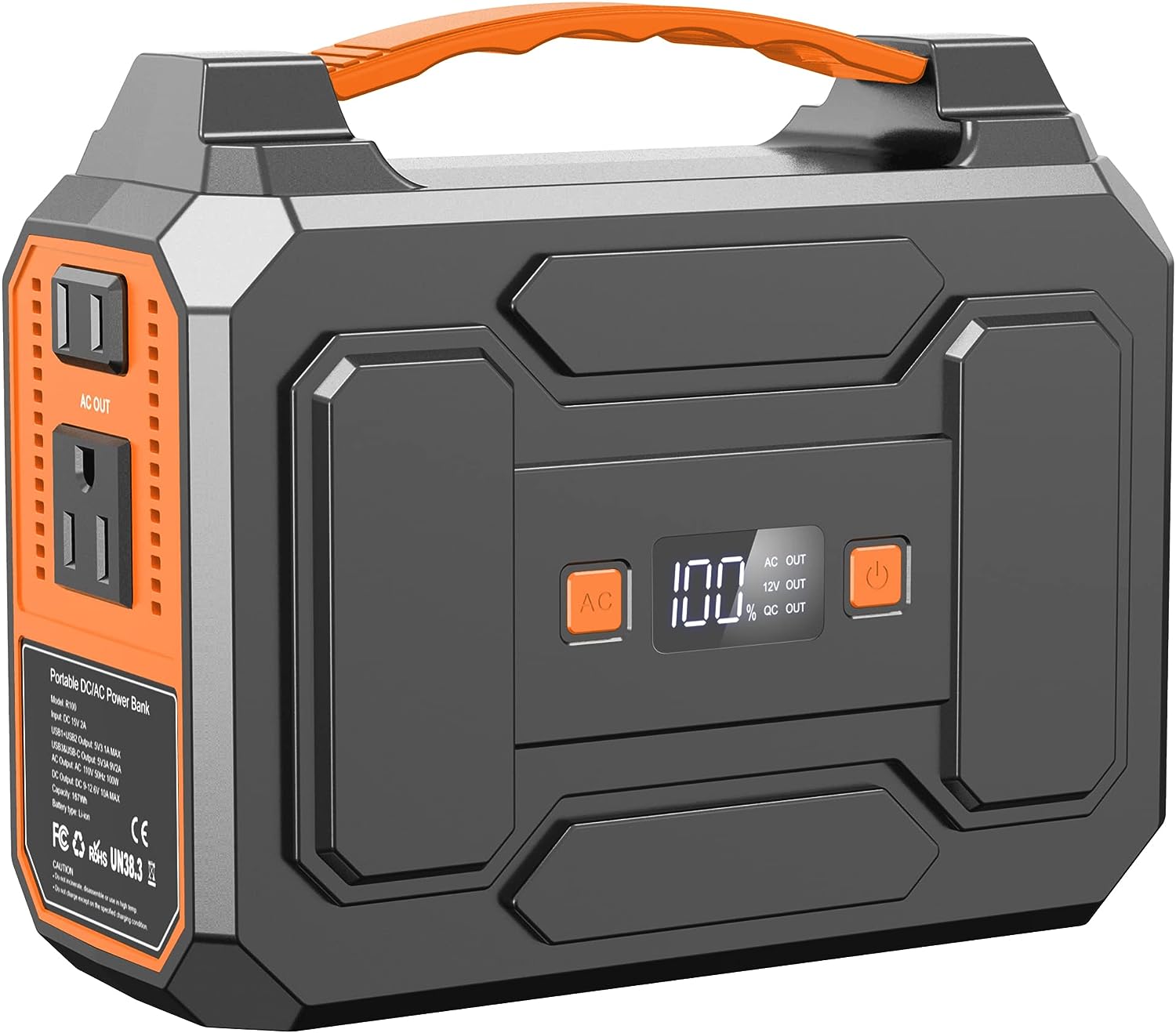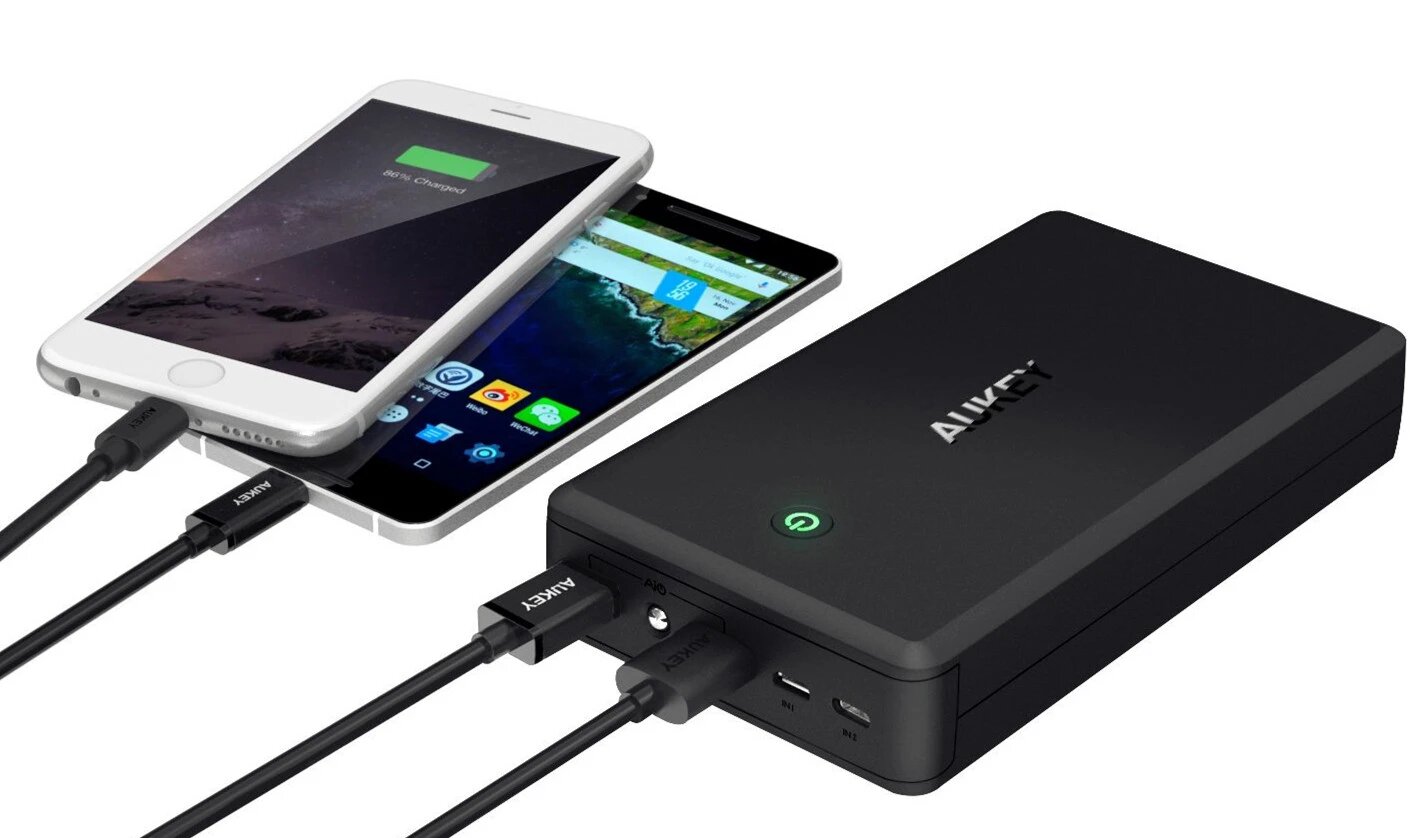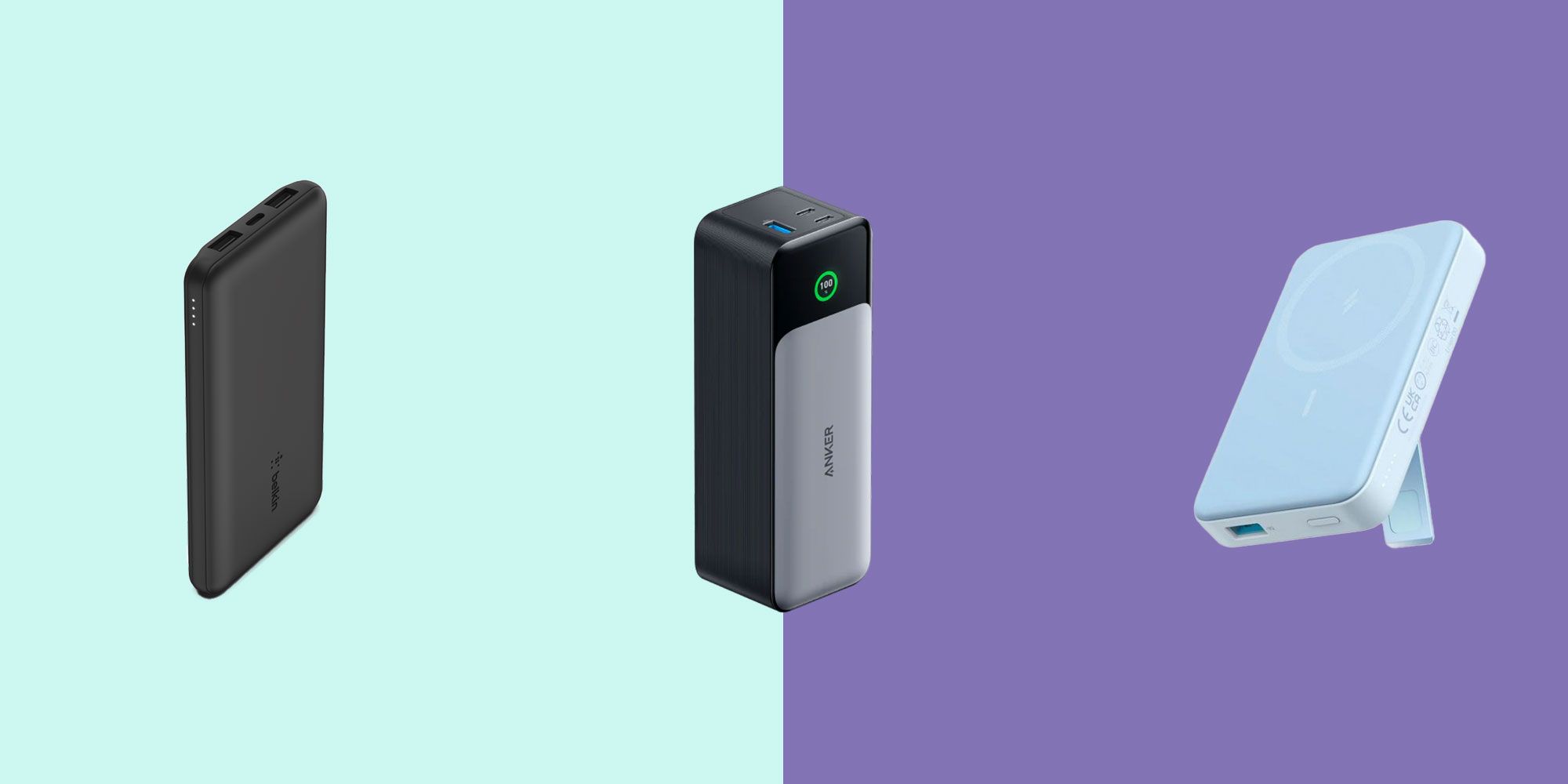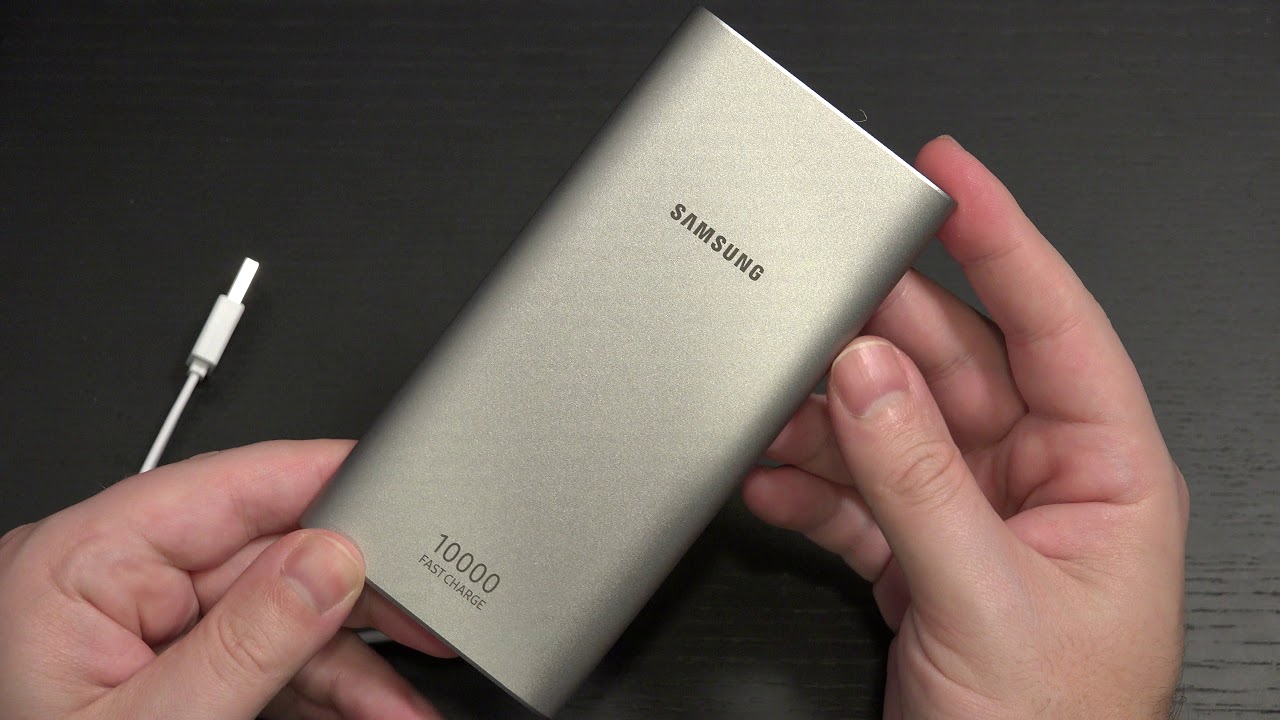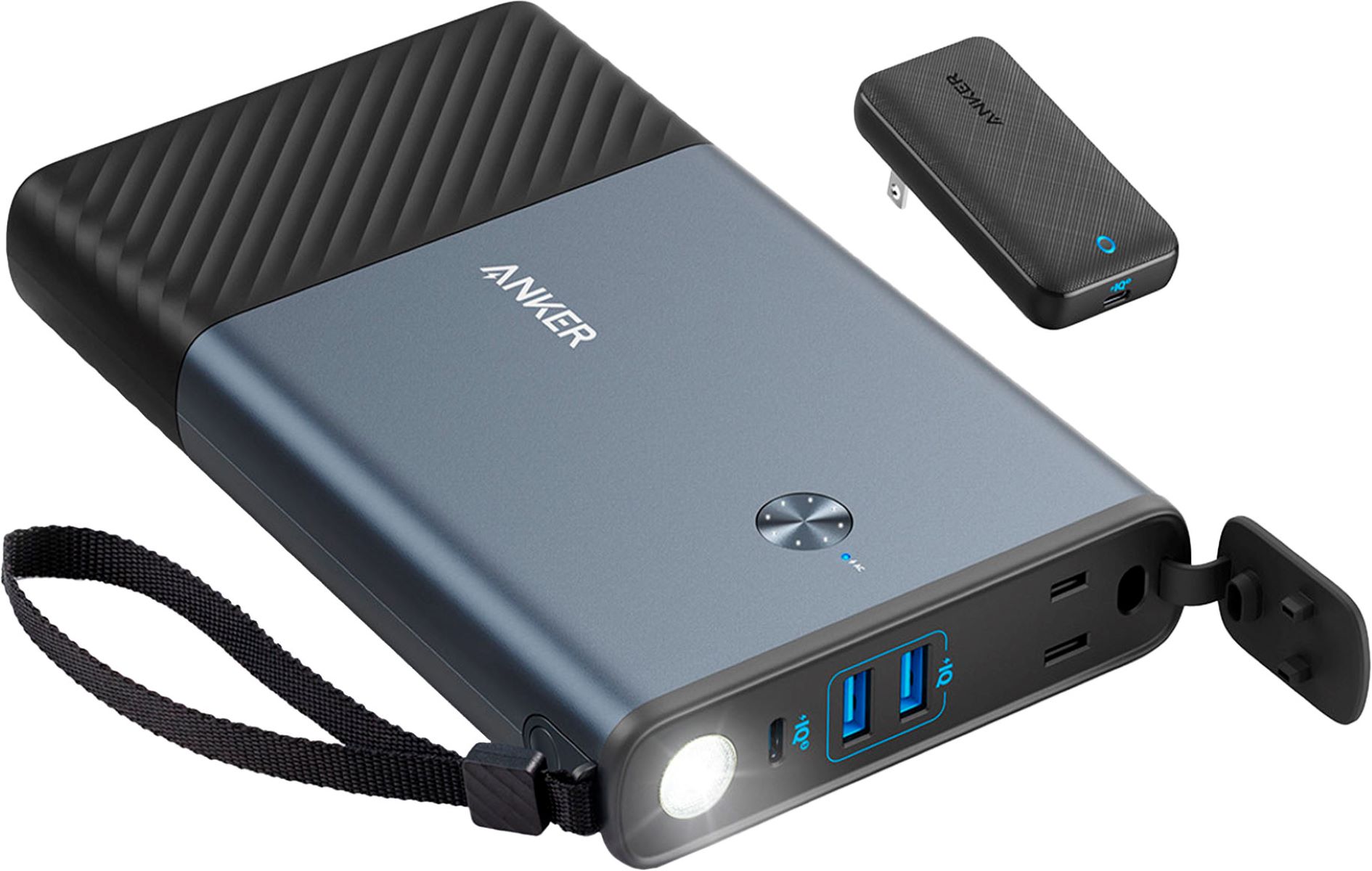Introduction
Power banks have become an essential accessory for our increasingly mobile lifestyles. Whether you are traveling, attending meetings, or participating in outdoor activities, having a reliable power bank ensures that your devices stay charged and accessible throughout the day. However, with the multitude of options available in the market, it can be challenging to choose the right power bank that best suits your needs.
In this article, we will discuss the key factors to consider when selecting a power bank. By understanding these factors, you can make an informed decision and invest in a power bank that aligns with your requirements.
From capacity and portability to charging speed and safety features, there are several aspects to evaluate before making a purchase. By thoroughly considering these factors, you can ensure that your power bank not only meets your immediate charging needs but also provides a long-lasting and reliable solution.
Investing in a high-quality power bank will save you from frustration during critical moments when you need your devices the most. Let’s explore the crucial factors to look for when selecting a power bank, so you can find the perfect companion to keep your devices powered up.
Capacity
The capacity of a power bank refers to the amount of electric charge it can store and deliver to your devices. It is measured in milliampere-hours (mAh). When choosing a power bank, it is important to consider the capacity that best suits your needs.
The capacity of a power bank determines how many times it can charge your device. For example, if your smartphone has a battery capacity of 3000mAh and you have a power bank with a capacity of 10000mAh, it should be able to charge your smartphone fully approximately 3 times before running out of power.
When considering the capacity, it’s essential to take into account the specific devices you will be charging and their power requirements. Larger devices with bigger batteries, such as tablets or laptops, will require a power bank with a higher capacity. On the other hand, if you mainly use your power bank to charge smaller devices like smartphones or smartwatches, a lower capacity may suffice.
Keep in mind that the actual available capacity might be slightly lower due to energy loss during the charging process. Additionally, it’s essential to note that the capacity mentioned by the manufacturer might not equate to the actual usable capacity. Some power banks have more efficient circuitry than others, allowing them to deliver a higher usable capacity.
The capacity of the power bank also determines its physical size and weight. Higher capacity power banks tend to be bulkier and heavier, while lower capacity power banks are more compact and lightweight. Consider your specific usage scenarios and the importance of portability when deciding on the capacity of your power bank.
In summary, when choosing a power bank, evaluate the capacity based on the devices you will be charging and your portability requirements. A power bank with a higher capacity will provide more charging cycles but might be less portable, while a lower capacity power bank may be lighter and more convenient to carry, but might not meet the charging needs of larger devices.
Portability
Portability is a crucial factor to consider when selecting a power bank, especially if you frequently travel or need to carry it with you throughout the day. The portability of a power bank is determined by its size, weight, and design. Here are some key points to keep in mind:
Size: A compact and slim power bank is easier to carry and fits conveniently in your pocket or bag. Look for power banks that are designed to be lightweight and compact without compromising on capacity or functionality.
Weight: Consider the weight of the power bank, especially if you plan to carry it for extended periods. Lighter power banks are more comfortable to carry around, making them ideal for outdoor activities or travel.
Design: Besides size and weight, the design of the power bank can impact its portability as well. Look for power banks with smooth edges and a sleek design that won’t snag on clothing or accessories when placed in your bag or pocket.
Capacity-to-Size Ratio: It’s important to strike a balance between capacity and size. While higher capacity power banks offer more charging cycles, they tend to be bulkier. Consider your charging needs and find a power bank with a suitable capacity-to-size ratio that aligns with your portability requirements.
Additional Features: Some power banks come with built-in features like carabiner clips or straps that make them easier to carry or attach to backpacks. These features can add to the overall portability and convenience of the power bank.
Ultimately, the level of portability you need depends on your personal preferences and usage habits. If you are always on the go and need a power bank that seamlessly fits into your lifestyle, prioritize smaller and lightweight options. Conversely, if you prioritize capacity over portability and mainly use the power bank in stationary settings, you can opt for a larger and heavier model.
Remember to consider portability alongside other factors, such as capacity and functionality, to find the optimal power bank that meets your charging needs while being convenient to carry.
Number of USB Ports
When selecting a power bank, it’s important to consider the number of USB ports it offers. The number of USB ports determines how many devices you can charge simultaneously. Here are some key points to keep in mind:
Single-port vs. Multiple-port: Power banks are available in both single-port and multiple-port configurations. Single-port power banks have only one USB port, allowing you to charge one device at a time. On the other hand, multiple-port power banks come with two or more USB ports, enabling you to charge multiple devices simultaneously.
Convenience: If you often need to charge multiple devices at once, such as a smartphone and a tablet, a power bank with multiple USB ports can be highly convenient. It eliminates the need to carry multiple power banks or wait for one device to charge before charging another.
Compatibility: Ensure that the power bank’s USB ports are compatible with the devices you intend to charge. Most power banks feature standard USB-A ports, which are compatible with a wide range of devices, including smartphones, tablets, Bluetooth headphones, and fitness trackers. However, if you have devices that require USB-C or other proprietary connector types, consider a power bank with dedicated ports for those devices.
Charging Speed: Keep in mind that the charging speed might be affected when charging multiple devices simultaneously. Some power banks have smart charging technology that can distribute power efficiently among the connected devices, ensuring optimal charging speed for each. This can be particularly useful if you often charge multiple devices at once.
Future-proofing: Consider the future when it comes to the number of USB ports. As technology advances and more devices adopt USB-C or other emerging connector types, having a power bank with multiple USB ports can ensure compatibility with a wider range of devices down the line, reducing the need for additional adapters or cables.
Ultimately, the number of USB ports you need in a power bank depends on your charging requirements and the number of devices you typically need to charge simultaneously. If you frequently charge multiple devices or anticipate the need to do so in the future, a power bank with multiple USB ports can provide added convenience and flexibility.
Output Current and Voltage
The output current and voltage of a power bank are essential factors to consider when selecting the right one for your devices. The output current refers to the rate at which the power bank can deliver electric current to your devices, while the output voltage represents the electrical potential difference provided by the power bank. Here’s what you need to know:
Matching Device Requirements: Ensure that the output current and voltage specifications of the power bank match or are compatible with the requirements of your devices. Most smartphones and tablets require a standard 5V output voltage, while some laptops and other high-powered devices may require higher voltage levels like 9V or 12V. Additionally, the required output current will vary depending on the specific device. Make sure the power bank is capable of providing the necessary current to charge your devices efficiently.
Output Current: The output current is measured in amperes (A) or milliamperes (mA). Higher output current means faster charging for your devices, especially for those that support fast charging technology. Consider the power bank’s output current capacity and match it with your devices’ charging capabilities for optimal charging speed.
Output Voltage: The output voltage is typically fixed for most power banks and is usually 5V. However, some power banks offer variable voltage options to accommodate devices with non-standard voltage requirements. It’s crucial to ensure that the power bank’s output voltage aligns with your devices to avoid any compatibility issues or potential damage to your devices.
Constant vs. Adaptive Output: Some power banks feature adaptive output technology, which can automatically adjust the output current and voltage according to the connected device’s charging requirements. This allows for efficient and safe charging of various devices. However, keep in mind that not all power banks offer this feature, so consider whether it’s important for your charging needs.
Multiple Output Ports: If you plan to charge multiple devices simultaneously, check that the power bank’s output current is divided evenly among the ports. In some cases, power banks may provide different output currents for each port. Ensure the output current is sufficient for all connected devices to charge effectively.
When evaluating power banks based on the output current and voltage, it’s crucial to strike a balance between compatibility with your devices and the charging speed you require. Consider the specific requirements of your devices and choose a power bank that can deliver the optimal combination of output current and voltage.
Input Current and Voltage
The input current and voltage of a power bank are just as important as the output specifications, as they determine how efficiently and quickly the power bank itself can be charged. Understanding the input current and voltage is crucial for ensuring seamless charging of the power bank. Here’s what you need to know:
Input Current: The input current refers to the rate of electric current required to charge the power bank effectively. It is measured in amperes (A) or milliamperes (mA). The higher the input current, the faster the power bank will recharge. When selecting a power bank, consider the available input current options and ensure they are compatible with the charging capabilities of the power source you will be using, such as a wall adapter or a computer USB port.
Input Voltage: The input voltage represents the electrical potential difference required to charge the power bank. Most power banks have a standard input voltage of 5V, which is compatible with most USB power sources. However, some power banks may have variable input voltage options, allowing you to charge them using a higher voltage like 9V or 12V for faster recharging. Ensure that the power bank’s input voltage matches the charging capabilities of your power source for efficient charging.
Charging Speed: The input current and voltage directly impact the charging speed of the power bank. Higher input current and voltage ratings result in faster charging time. If you need to quickly recharge your power bank, look for models that offer higher input current and voltage specifications.
Charging Time: It’s important to note that the charging time of a power bank is not solely determined by the input current and voltage. Factors such as battery capacity and efficiency also play a significant role. However, ensuring that the input current and voltage are suitable and compatible with your power source will help optimize the charging time of the power bank.
Compatibility: Make sure the power bank’s input current and voltage specifications are compatible with the charging capabilities of the power source you intend to use. Different USB chargers or ports may have varying output current and voltage ratings, so it’s essential to ensure they align with the input requirements of the power bank to avoid potential issues or reduced charging efficiency.
By considering the input current and voltage of a power bank, you can ensure that it charges quickly and efficiently, minimizing any downtime between charges. Ensure compatibility between the power bank’s input current and voltage specifications and the charging capabilities of your chosen power source.
Charging Speed
Charging speed is a crucial factor to consider when selecting a power bank. The charging speed determines how quickly your devices can recharge when connected to the power bank. Here are some key points to keep in mind:
Output Current and Voltage: The output current and voltage of the power bank directly affect the charging speed. Higher output current enables faster charging, especially if your devices support fast charging technology. Similarly, a power bank with a higher output voltage can deliver more power to the connected devices, resulting in faster charging times. Consider the charging capabilities of your devices and choose a power bank that provides the appropriate output current and voltage.
Fast Charging Technology: Look for power banks that support fast charging technology, such as Qualcomm Quick Charge or Power Delivery (PD). These technologies allow for faster and more efficient charging of compatible devices. If you have devices that are compatible with these fast charging standards, investing in a power bank that supports them can significantly reduce charging times.
Smart Charging: Some power banks feature smart charging technology that can detect and optimize the charging process based on the connected device’s requirements. This ensures efficient and safe charging without the need for manual adjustments. Smart charging can help maximize the charging speed while protecting your devices from overcharging or overheating.
Battery Capacity: The capacity of the power bank also plays a role in charging speed. A higher capacity power bank can store more energy and deliver it at a faster rate, resulting in quicker charging times for your devices. However, keep in mind that larger capacity power banks tend to be bulkier and heavier, so you will need to strike a balance between capacity and portability if charging speed is a priority for you.
Charging Cables: The type and quality of charging cables used can impact the charging speed. Opt for high-quality cables that are designed for fast charging and have adequate power transfer capabilities. Inferior cables may not be able to handle high charging currents, resulting in slower charging speeds. Additionally, ensure that the cables are compatible with the devices you intend to charge.
It’s important to note that the charging speed may vary depending on various factors such as the device’s charging capabilities, the power bank’s output, and the condition of the charging cables. However, selecting a power bank with optimized charging speed features can help ensure efficient and timely charging for your devices.
Battery Type
The type of battery used in a power bank is an important consideration when choosing the right one for your needs. Different battery technologies have their own strengths and weaknesses. Here are some key points to consider:
Lithium-ion (Li-ion): This is the most common and widely used battery technology in power banks. Li-ion batteries offer a good balance between capacity, weight, and lifespan. They are known for their high energy density, allowing them to store more power in a compact size. Li-ion batteries also have a relatively low self-discharge rate, meaning they can hold their charge for longer periods when not in use. Additionally, Li-ion batteries are typically lightweight, making them a popular choice for portable power banks.
Lithium Polymer (Li-Po): Li-Po batteries are similar to Li-ion batteries but have a different electrolyte composition. They offer similar advantages, such as high energy density and low self-discharge rates. However, Li-Po batteries can be molded into various shapes, making them ideal for power banks with unique designs or slim form factors. Li-Po batteries also have a lower risk of swelling or overheating compared to Li-ion batteries.
Nickel-Metal Hydride (NiMH): While less common in power banks, NiMH batteries still have their place in the market. They offer a lower energy density compared to Li-ion and Li-Po batteries, resulting in larger and heavier power banks for the same capacity. However, NiMH batteries are more cost-effective and have a better charging efficiency than other battery types. They also have a longer lifespan, making them a suitable choice for those who prioritize durability over size and weight.
It’s important to note that the performance of the battery may also depend on its quality and the specific brand. While the battery type provides a general understanding of the power bank’s characteristics, factors such as the overall design, circuitry, and manufacturing quality also contribute to its performance and reliability.
When considering the battery type, think about your specific needs and priorities. If you prioritize portability, a power bank with a Li-ion or Li-Po battery would be a suitable choice. For those who require a longer lifespan and can compromise on size and weight, a power bank with NiMH batteries might be more appropriate. Consider factors such as capacity, weight, lifespan, and cost to determine which battery type aligns best with your requirements.
Safety Features
Safety is of utmost importance when it comes to portable power banks, as they store and deliver electrical energy. Therefore, it is crucial to consider the safety features offered by a power bank before making a purchase. Here are some essential safety features to look for:
Overcurrent Protection: This feature safeguards your devices by automatically cutting off the power flow if the current exceeds the safe limit. It helps prevent damage to both the power bank and your connected devices, reducing the risk of overheating or short circuits.
Overvoltage Protection: Overvoltage protection ensures that the output voltage remains within the safe range to prevent damage to your devices. It detects any voltage surge and quickly shuts down the power supply to protect your devices from potential harm.
Short-Circuit Protection: Short-circuits can occur due to faulty cables or improper connections. Short-circuit protection detects these abnormalities and halts the power flow instantaneously, preventing potential damage not only to the power bank but also to your devices.
Temperature Control: Temperature control mechanisms, such as temperature sensors or thermal fuses, monitor the operating temperature of the power bank. If the temperature exceeds a certain threshold, the power bank will automatically adjust its output or shut down to prevent overheating. This protects the battery and ensures safe operation.
Overcharge/Overdischarge Protection: Overcharging or overdischarging a lithium-based battery can lead to performance degradation or even safety hazards. Power banks with overcharge/overdischarge protection monitor and control the charging and discharging process, preventing the battery from being overcharged or drained beyond safe levels.
Power Management: Some advanced power banks have built-in power management features that intelligently distribute power among connected devices. This ensures efficient charging and prevents power fluctuations that might affect performance or reliability.
Certifications: Look for power banks that are certified by reputable organizations such as UL (Underwriters Laboratories) or CE (Conformité Européene). These certifications ensure that the power bank meets safety standards and has undergone rigorous testing for electrical and fire safety.
When purchasing a power bank, prioritize models that offer extensive safety features to protect both you and your devices. It is essential to invest in a reliable and well-built power bank to minimize the risk of electrical issues and ensure a safe charging experience.
Design and Durability
The design and durability of a power bank are important factors to consider, as they determine the overall user experience and the longevity of the device. Here are some key points to keep in mind:
Compact and Lightweight: Look for power banks that are designed to be compact and lightweight, as they are more convenient to carry around. A sleek and slim design will easily fit in your pocket, bag, or purse, allowing you to have a portable power source wherever you go.
Ergonomics: Consider the ergonomics of the power bank, paying attention to factors such as comfortable grip, smooth edges, and button placement. An ergonomic design helps enhance the user experience and makes it easier to handle the device while on the go.
Display and Indicator Lights: A clear and intuitive display or indicator lights can provide essential information about the remaining battery life, charging status, and other relevant details. This allows you to monitor the power bank’s performance and makes it easier to gauge when it needs to be recharged.
Material and Build Quality: Opt for power banks that are constructed using durable materials and have a solid build quality. Power banks that feature sturdy construction are more likely to withstand accidental drops, bumps, and regular wear and tear.
Non-Slip Surface: A power bank with a non-slip surface or coating provides better grip and reduces the likelihood of accidentally dropping the device. This feature is especially important if you plan to use the power bank during outdoor activities or while on the move.
Port and Cable Management: Some power banks come with built-in cable management systems or storage compartments for connecting cables. This helps keep your cables organized and prevents them from tangling or getting lost.
Water and Dust Resistance: Consider power banks that have water and dust resistance ratings, such as an IPX4 or IPX5 rating. This provides an added layer of protection against accidental spills or exposure to dust, increasing the overall durability of the device.
User-Friendly Features: Look for additional user-friendly features such as auto power-off when not in use, LED flashlights, or built-in wireless charging capabilities. These features can enhance the convenience and versatility of the power bank.
Remember that while design and aesthetics are important, durability plays a crucial role in the longevity of the power bank. Investing in a well-designed and durable power bank ensures that it can withstand the demands of daily use, giving you a reliable source of power for your devices for an extended period.
Price
Price is an important factor to consider when selecting a power bank, as it determines the affordability and value for money. While it’s important to stay within your budget, it’s equally crucial to find a power bank that meets your charging needs and offers reliable performance. Here are some key points to consider regarding price:
Capacity vs. Price: The price of a power bank is often influenced by its capacity. Higher capacity power banks tend to have a higher price tag, as they can charge devices multiple times before needing to be recharged themselves. Evaluate your charging needs and budget to find the right balance between capacity and cost.
Brand Reputation: Power banks from well-established and reputable brands often come at a higher price compared to lesser-known brands. These established brands have a track record of reliable performance, quality components, and robust safety features. This can provide peace of mind and assurance of a reliable power bank, albeit at a slightly higher cost.
Additional Features: Power banks that offer additional features, such as fast charging technology, multiple output ports, or wireless charging capabilities, may come at a higher price point. Consider whether these features are essential for your charging needs and if the added cost justifies the benefits they provide.
Build Quality: The build quality and materials used in the construction of a power bank can impact its price. Power banks with durable and premium materials such as aluminum alloy or high-quality plastic tend to have a higher price tag. However, a higher-priced power bank with superior build quality may offer better durability and longevity, making it a worthwhile investment in the long run.
Warranty and Support: Consider the warranty and customer support offered by the manufacturer. While a power bank with an extended warranty period might come at a slightly higher price, it provides additional protection and peace of mind in case of any defects or issues with the device.
User Reviews: Look for reviews and feedback from other customers to assess the value for money of a power bank. Real-world experiences shared by users can give you insights into the reliability, performance, and overall satisfaction of a specific power bank model at its price point.
When evaluating power banks based on price, it’s important to consider the balance between cost and the features, performance, and durability you require. While it can be tempting to opt for the lowest-priced option, it’s essential to assess the value and quality of the power bank to ensure a satisfactory charging experience without compromising on safety or performance.
Conclusion
Choosing the right power bank requires careful consideration of various factors to ensure that it meets your charging needs and provides a reliable source of power for your devices. By evaluating the capacity, portability, number of USB ports, output and input current/voltage, charging speed, battery type, safety features, design and durability, and price, you can make an informed decision that maximizes the value and functionality of your power bank.
Consider the capacity of the power bank based on the devices you will be charging and your portability requirements. A higher capacity power bank allows for more charging cycles but may be less portable. Balance this with your specific needs for on-the-go charging. Additionally, assess the number of USB ports and their compatibility with your devices, ensuring that the power bank can charge multiple devices simultaneously if required.
Pay attention to the output and input current and voltage specifications to ensure compatibility with the devices you intend to charge and the charging capabilities of your power source. This will optimize charging speed and efficiency. Furthermore, consider the battery type, as it can impact factors like capacity, weight, and lifespan. Choose a battery type that aligns with your priorities and requirements.
Ensure that the power bank incorporates essential safety features such as overcurrent protection, overvoltage protection, short-circuit protection, temperature control, and overcharge/overdischarge protection. By prioritizing safety, you can protect your devices and minimize the risk of electrical issues.
Consider the design and durability of the power bank to ensure a comfortable and reliable user experience. A compact and lightweight power bank with a durable build, non-slip surface, and thoughtful design features enhances portability and convenience. Additionally, assess the price of the power bank in relation to its features, brand reputation, and additional benefits like warranty and customer support.
In conclusion, finding the right power bank is a matter of balancing your specific needs with the available options in the market. By understanding and evaluating the key factors discussed in this article, you can make an informed decision and invest in a power bank that serves as a reliable companion for all your charging needs.









